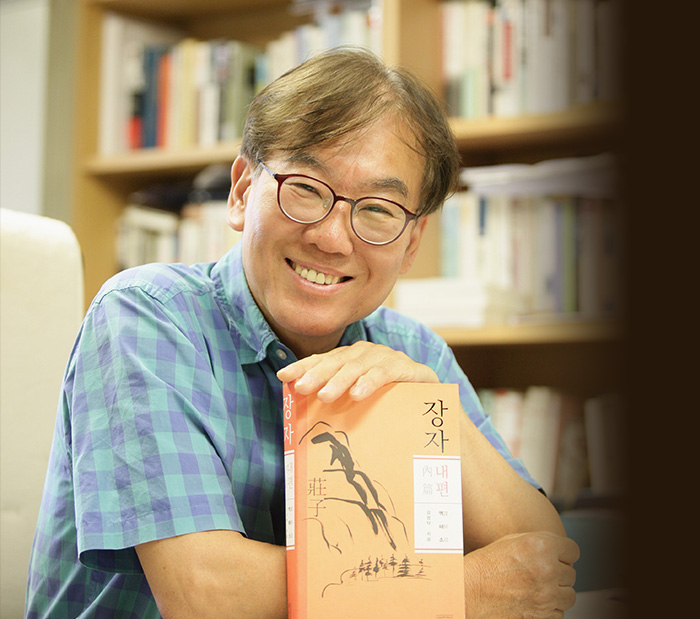Research Stories
Zhuangzi : The Inner Chapters
『Zhuangzi: The Inner Chapters』 reinterpreted by the author majored in communication from a new point of view. Throughout this book, we can meet the greatest communication philosopher in the history of mankind!
Journalism and Mass Communication
Prof.
KIM, JEONG TAK
About this book
In order to interpret the classics of East Asia, It needs to undergo five steps: 譯(translation), 注(pouring), 解(interpretation), 疏(communication), and 疏(discussion).
譯(Yeok) means the translation. However, just translating words are not enough to understand the classics of East Asia. Translation needs water as like we give water when rice planting. It makes writing alive. This is 注(Ju-pouring). 解(Hae) is interpretation. Even though the writing went through 譯 and 注, the sentences can still be very rough or tough. Therefore, interpretation is needed to figure out the right meaning of the writing, and this is 解. After 解, we need to find out what the content means to people today and this activity is called 疏. Lastly, Finally, The criticism should be done about this content and this is 疏(Non-discussion). These all five steps should be done to clarify the real meaning of the classics of East Asia.
The Zhuangzi has 33 chapters, and it has been recognized for a long time that these chapters seem to fall into groups; within each group, the chapters share an intellectual outlook and certain textual features. However, only three groups are little different with other groups in their orientations. The first of these groups, chapters 1-7, forms the most coherent section of the text and many would argue that this is also the most philosophically interesting section as well. These are called the “Inner Chapters”; chapters 8-22 are called the “Outer Chapters”; “Inner Chapters” is consisted of “Free and Easy Wandering”, “Treatise on Making Things Equal”, “The Pivot of Nurturing Life”, “In the World of Man”, “The Mark of Utmost Virtue”, “The Prime Master”, and “In Response to High Kings”. “Free and Easy Wandering” is an introduction. “Treatise on Making Things Equal” is an theoretical base and the others are branches.
Zhuangzi was carefully composed than any other hundred schools of philosophy books. It is the very important reason why we should take five steps before to understand. These sequences will lead reinterpretations of Zhuangzi.

